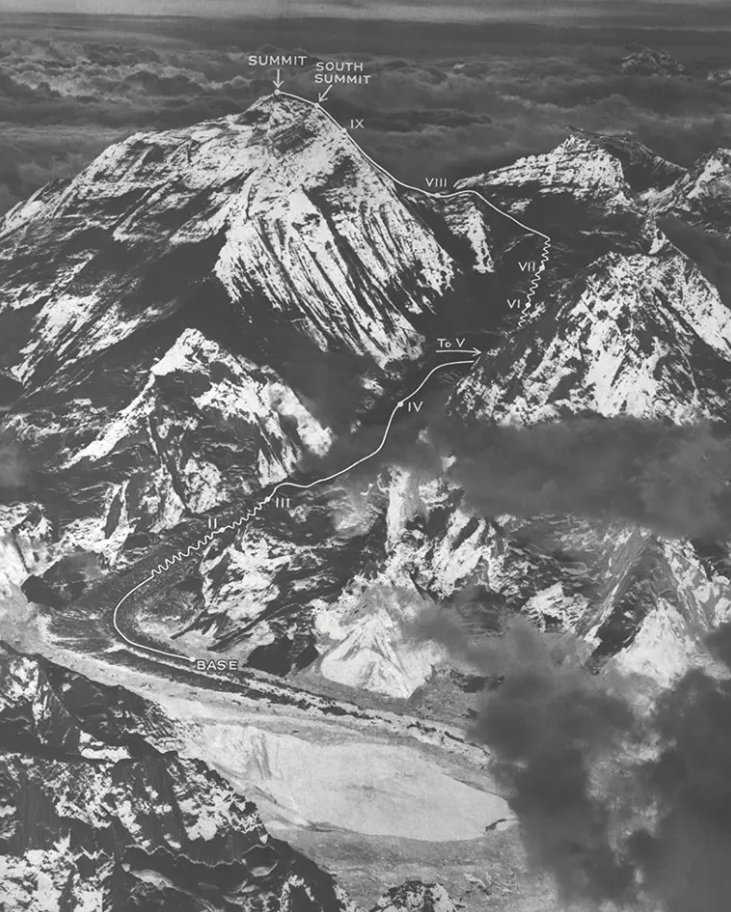
The summit push in May 1953 was a story of individual heroism and shared ambition. Ed Hillary, alongside Tenzing Norgay, battled exhaustion and freezing temperatures to become the first men to stand atop the world.
However, the controversy surrounding who first reached the summit continues to simmer. Regardless, their shared determination and collaboration remain undeniable, as evidenced by Tenzing’s poignant statement:
“We reached the summit together, and we turned together towards the west to begin our descent.“
The 1953 Everest ascent transcended a mere sporting achievement. It became a global spectacle, capturing the imagination of millions and sparking a newfound awe for the world’s tallest peak. The cinematic portrayal in “The Conquest of Everest” further cemented this image, turning Everest into the ultimate symbol of human ambition and perseverance.
However, the narrative’s complexity demands a nuanced lens. The environmental toll of subsequent expeditions, the internal rivalries that threatened to undermine the team spirit, and the diverse perspectives within Nepal regarding the expedition’s impact all paint a fuller picture. As Nepali scholar Pem Dolma Sherpa argues, “We must acknowledge the voices of those who have been marginalized in the dominant narrative, including the Sherpas and the local communities… Only then can we gain a truly comprehensive understanding of this defining moment.”
The legacy of the 1953 Everest ascent lives on, not just in the summit stories of Hillary and Norgay, but also in the countless adventurers who followed in their footsteps. It represents an indomitable spirit, a testament to human resilience, and a reminder of the transformative power of collaboration. Yet, its impact reaches far beyond the personal narratives, urging us to confront the environmental consequences, consider diverse perspectives, and embrace the complexities of this historical milestone.
Beyond the Summit: A Toast to the Entire 1953 Everest Team
Though the 1953 Everest expedition boasted 36 members, only a select few tackled the final summit push. Among them were a team of Sherpas led by experienced Sirdars, while others, from doctors to journalists, provided crucial support from afar, each playing a vital role in conquering the world’s highest peak.
Climbers
John Hunt (Leader)
Tom Bourdillon
Charles Evans
Wilfrid Noyce
Edmund Hillary
George Lowe
Eric Shipton
Alfred Gregory
James Coutts
Michael Ward
Anthony Westlake
Lawrence Wager
Sherpas
Tenzing Norgay
Ang Dawa Tenzing
Dawa Thondup
Pasang Dawa Lama
Mingma Norbu
Ngawang Phutar
Pemba Dorje
Sonam Gyaltzen
Anand
Dorje
Pasang
Sarki
Support Personnel
Dr. Charles Wylie (Doctor)
Tom Stobart (Base Camp Manager)
Dr. Michael Ward (Doctor)
James Morris (Journalist)
George Band (Surveyor)
Lhakpa Tsering (Cook)
Tenzing Bhotia (Sardar)
Dawa Tenzing (Sardar)
Mingma Tsering (Sardar)
Ang Norbu (Sardar)
Passang (Sardar)

